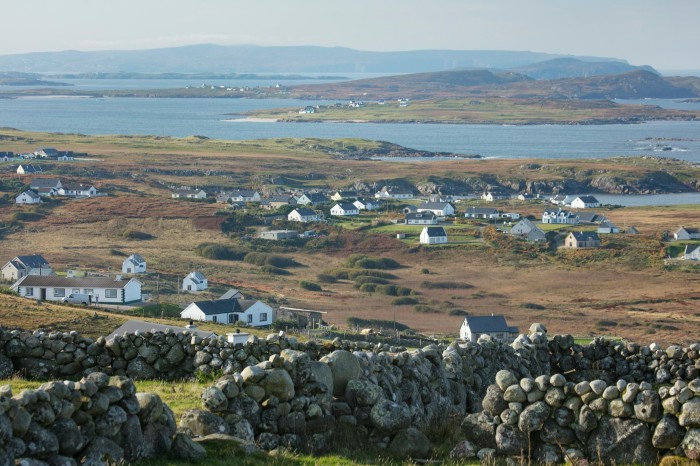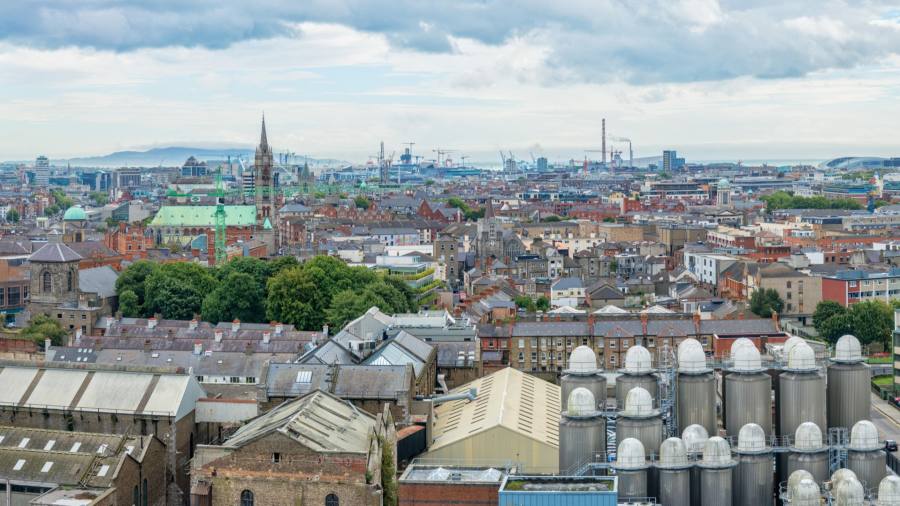[ad_1]
George grins broadly as he sips his pint of Guinness in a cosy Dublin pub, basking in the famous warmth of the land of céad míle fáilte (100,000 welcomes). As one of a fast-rising number of Chinese citizens investing in Ireland in exchange for residency, he has every reason to feel at home.
George, who asked not to give his real name, has invested €1mn in Ireland and said China’s uncertain economic outlook has spurred wealthy individuals like him to look for additional residency options abroad. “I’m worried about the future in China,” he said.
Ireland’s decade-old immigrant investor programme (IIP) soared in popularity in 2022, with the number of would-be investors from China more than tripling to 785 in the nine months to September, from 243 in the whole of 2021. Applications from all countries hit a record 812, nearly twice the annual record set in 2019.
Since the scheme began in 2012, Chinese investors, including those from Hong Kong, have accounted for more than 90 per cent of successful applicants and €1.18bn has been invested in total.
At past Chinese Communist party’s national congresses, “the keyword has been ‘economic growth’. But the buzzword of the 20th Congress [in October] was “struggle.” said the head of an Irish-based fund, focused on the hospitality sector, in which George has invested €1mn. The fund chief executive asked not to be identified.
“The middle class and above worry what that means for them, for their wealth, career and family,” he added.
Ireland has become an increasingly alluring choice in part because of problems with similar schemes elsewhere. Brexit made the UK a less attractive option even before London in February halted its own immigrant investor programme over security concerns, and the US scheme was also on hold for months.
“We’ve seen a huge jump [in IIP investments in Ireland] since 2017,” said Niamh Walsh, who runs TDL Horizons, which focuses on hotel and tourism property sales, in County Donegal, and who has worked with IIP clients. “My gut is that this is because of Brexit.”
Other factors such as education and the country’s friendly reputation made the English-speaking EU member state a coveted choice for investors such as George.
Nearly three years of harsh coronavirus curbs — only relaxed in December — were another factor in wealthy Chinese seeking overseas residency. “You can definitely draw a correlation there,” said James Hartshorn, chief executive and co-founder of Bartra Wealth Advisors, a leading IIP fund, whose portfolio includes social housing and nursing homes.
Many countries have schemes offering residency or even passports in exchange for investment, but Ireland’s success has been to make IIP investment “a tool to channel investment into areas of the economy that really need it”, said Hartshorn.
“Because of the cost of capital, interest rate rises and the cost of goods going up [which could slow investment in those sectors] . . . the programme is more important now than it was,” he said.
Applicants have four routes available: they can invest €1mn into an Irish enterprise, invest €1mn in an approved investment fund or invest €2mn in a stock-exchange listed real estate investment trust — all for a minimum of three years. Or they can donate €500,000 — or €400,000 if applications are made jointly by five people — to an arts, sports, culture or education project.
Peter Fitzpatrick, a member of Ireland’s Dáil parliament from County Louth and a former Gaelic footballer, has raised almost €15mn from Chinese IIP investors to build the first Gaelic games stadium in his county in 60 years.
“We got an agent who had contacts in Asia and got 37 applicants willing to invest €400,000,” he said. “We probably could have raised the money [without IIP] but not as quickly. It’s a dream come true.”

Both George, who has been managing his environmental monitoring business in China remotely, and Helen, a lawyer who also asked not to use her real name and who invested €500,000 to the same fund, say education was a big motivation. George has a son in high school and Helen has one at university in Ireland.
Walsh said “a huge benefit” was that investors only have to spend one day a year in Ireland. They do not lose residency in their home countries. However, the IIP programme does not grant investors the right to a passport.
Investors need to maintain the investment for at least three years. After that they can sell their investment and keep residency status, but have no further obligation to invest, said the hospitality-focused fund chief executive.
Although Chinese demand is driving IIP, applications from the US have also increased. “It has surprised everyone,” said Hartshorn. “The main reason I have heard is to do with the political situation in the US. [Former president Donald] Trump rattled a lot of people, there’s polarisation and concern about where things are going. There are huge historical connections between Ireland and the US so it allows Americans to get back to their roots,” he said.
The number of US applicants, usually about five or fewer since the IIP was launched, has more than doubled to 11 so far last year. The programme has seen 31 successful US applicants since 2012 and 1,511 from China, with a sizeable number of investors also from Vietnam, Saudi Arabia and South Africa.
Chinese investors, coming from a country with no Google, no Facebook and news largely from official sources, “really appreciate the freedom” that Ireland offers, said the hospitality-focused fund chief executive. But whether it can continue to attract the same volume of wealthy applicants depends on “where China goes from here” economically and politically.
He added: “Ireland used to be “a hidden secret in Europe . . . now it has been discovered.”
[ad_2]
Image and article originally from www.ft.com. Read the original article here.

